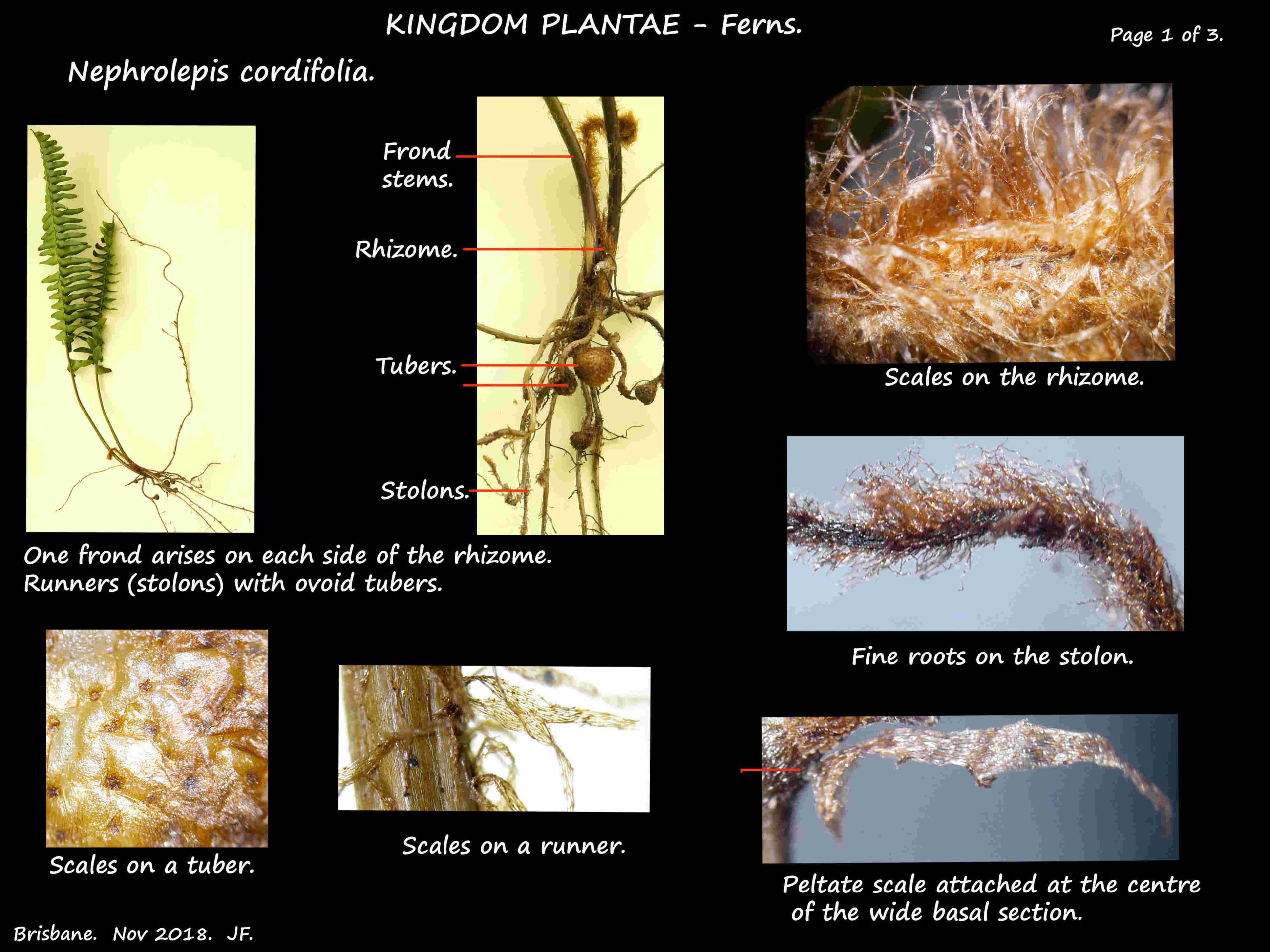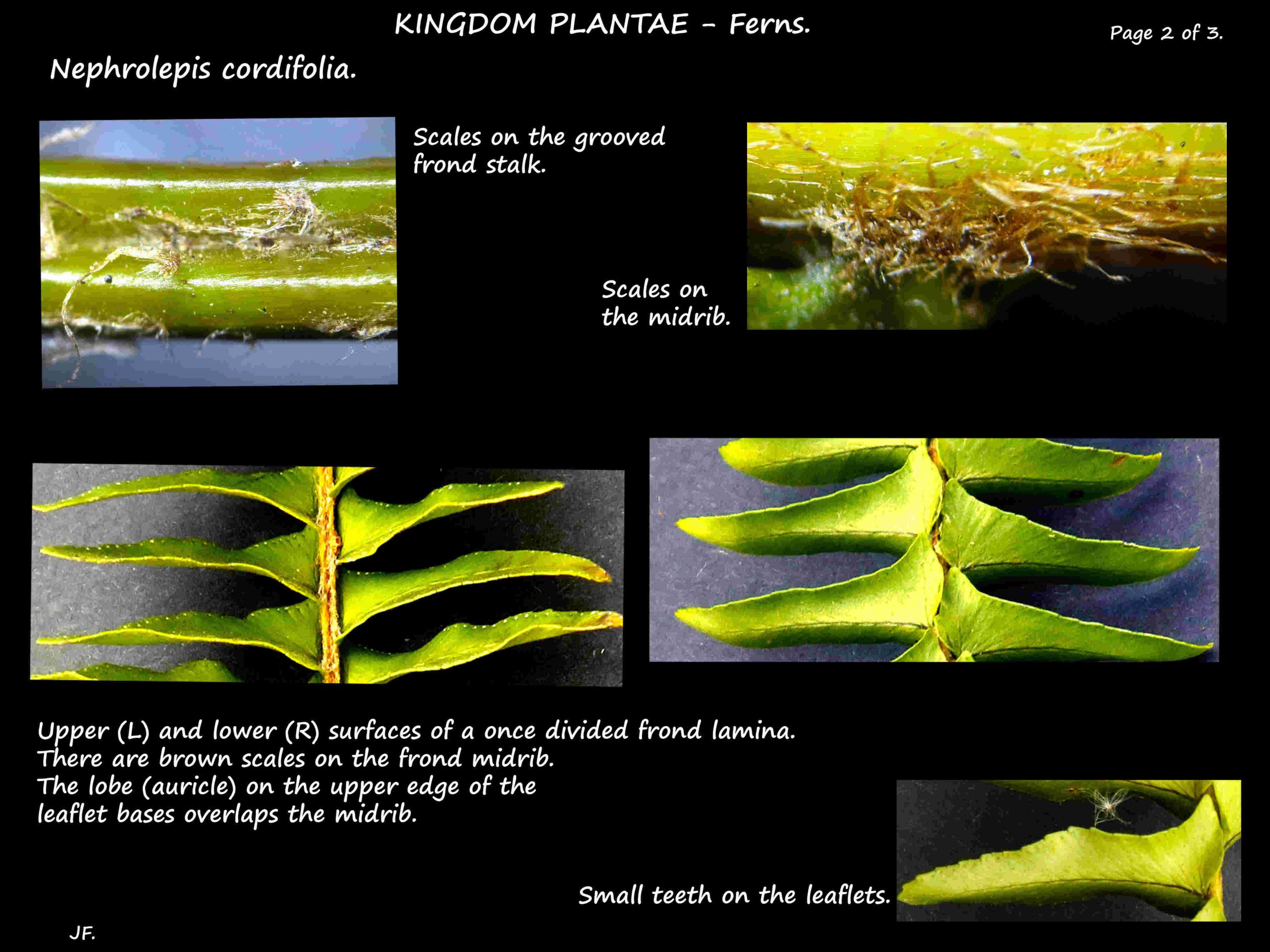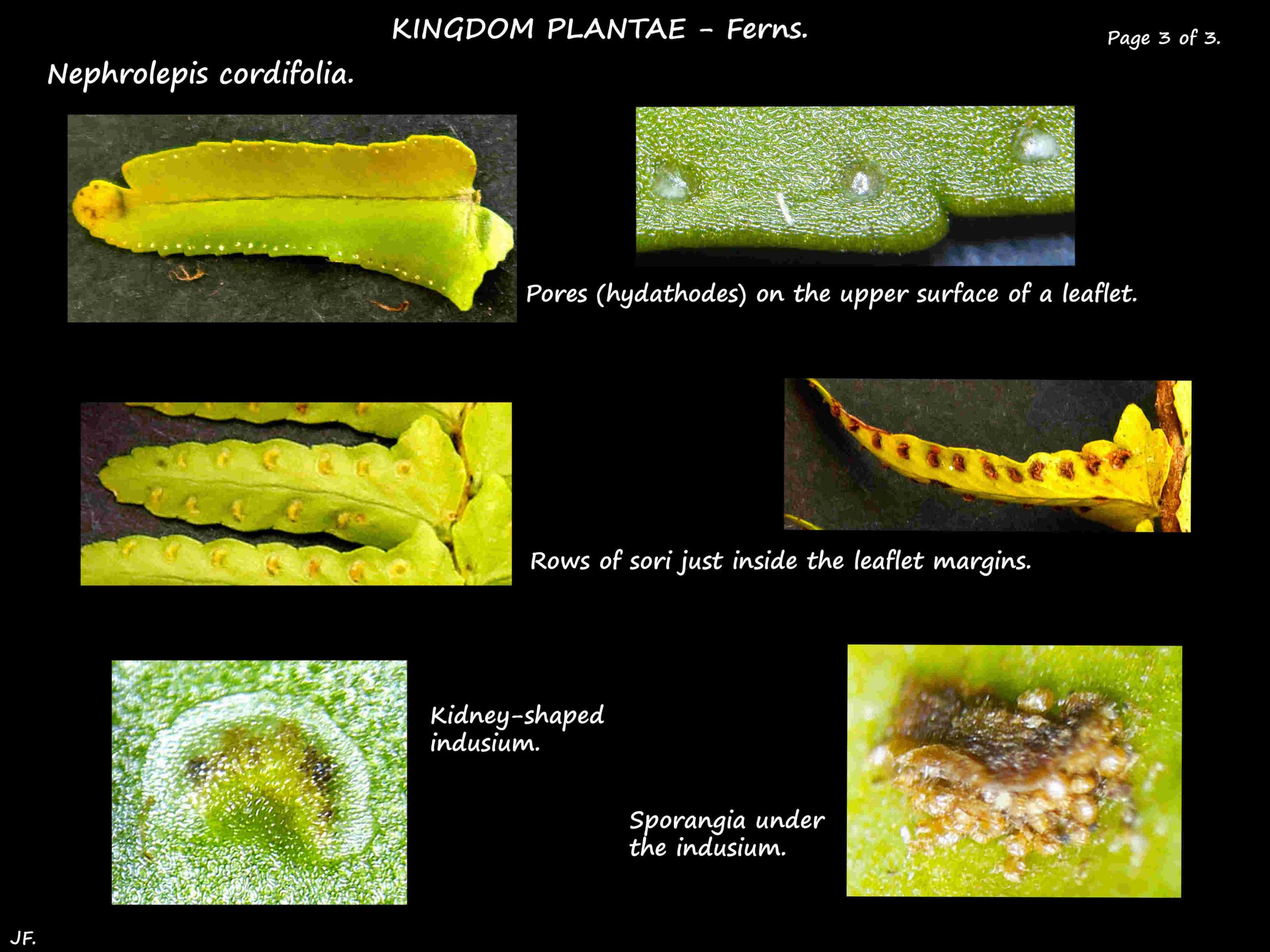Nephrolepis cordifolia.
The Family Davalliaceae has 3 or 4 genera with 2 found in Australia.
Arthropteris and Nephrolepsis are distinguished by how the frond stems are connected to the rhizome.
There are 4 species of Arthropteris and 5 of Nephrolepsis in Australia.
Nephrolepis cordifolia.
The Fishbone, Herringbone or Sword Fern.
There is a lot of variation in specimens from different areas.
Terrestrial ferns often growing in rock crevices.
The rhizome is short and has many short or long prostrate runnners or stolons.
The stolons have scales, fine roots and tubers on them.
The tubers are up to 15 mm across and covered in flattened scales.
The stolons and the base of the frond stems have pale brown, lanceolate scales.
The scales are not attached by their bases but by a small area in the centre of the wide basal area (peltate).
There is a dark spot over the point of attachment.
The scales, up to 8 mm long, have fine teeth and, around the base are hair-like threads.
Fronds can be up to about 1 m long, widest at the centre and are once divided (pinnate).
Frond stalks are a shiny brown and have lanceolate scales as described above.
The lamina midrib has similar scales.
The frond leaflets, up to 3.5 cm long, are on very short stalks and almost at 90 degrees to the midrib.
The lower leaflets are shorter and more widely spaced.
The upper edge of the leaflet base has a large, round lobe that overlaps the midrib.
Leaflet tips are rounded and the edges have tiny, blunt teeth.
The veins are forked and there are pores (hydathodes) at their ends for the excretion of water or minerals.
The sporangia are on the middle and upper leaflets.
They are in sori situated in rows near the leaflet edge.
They have a kidney-shaped indusium which opens towards the tip of the leaflet.
J.F.




